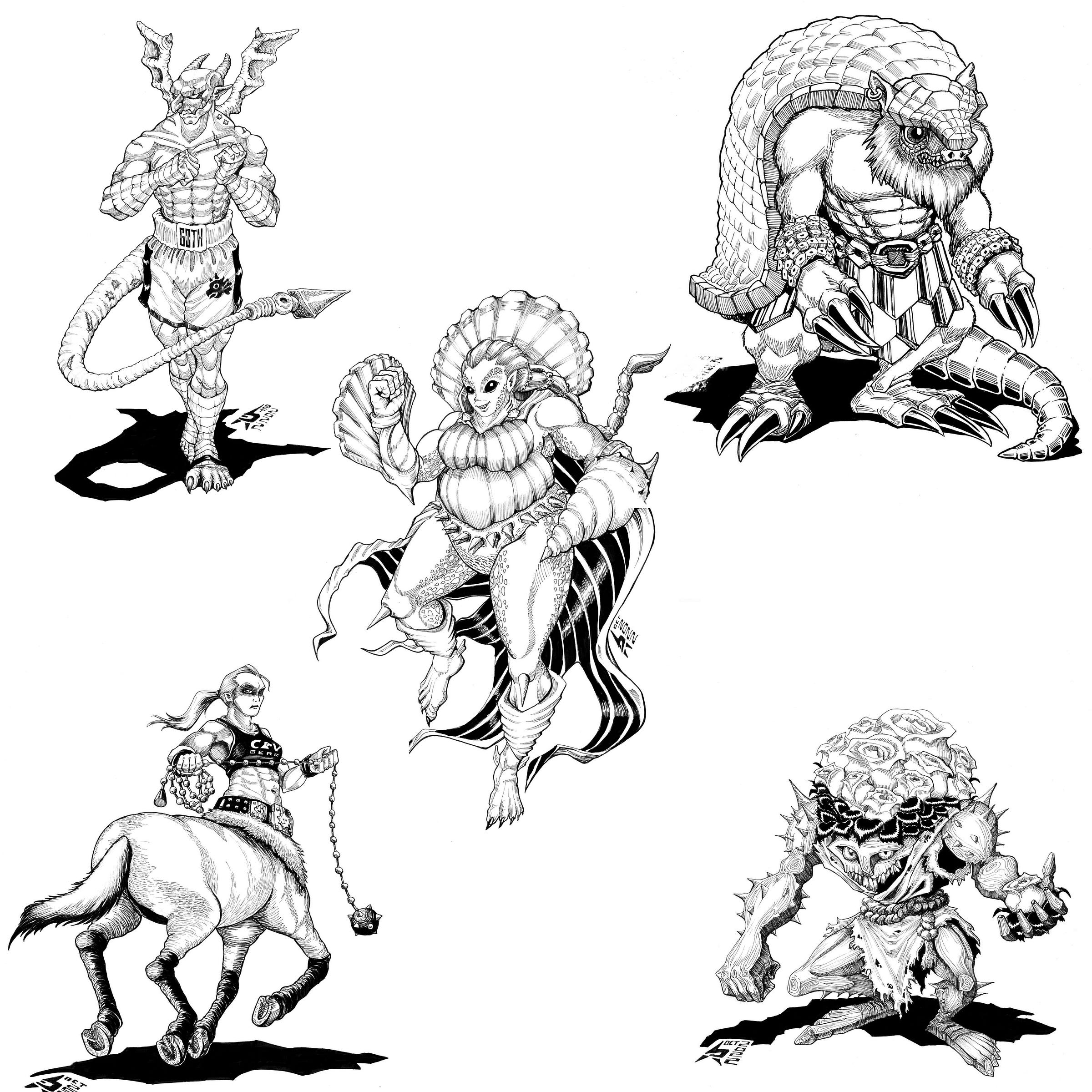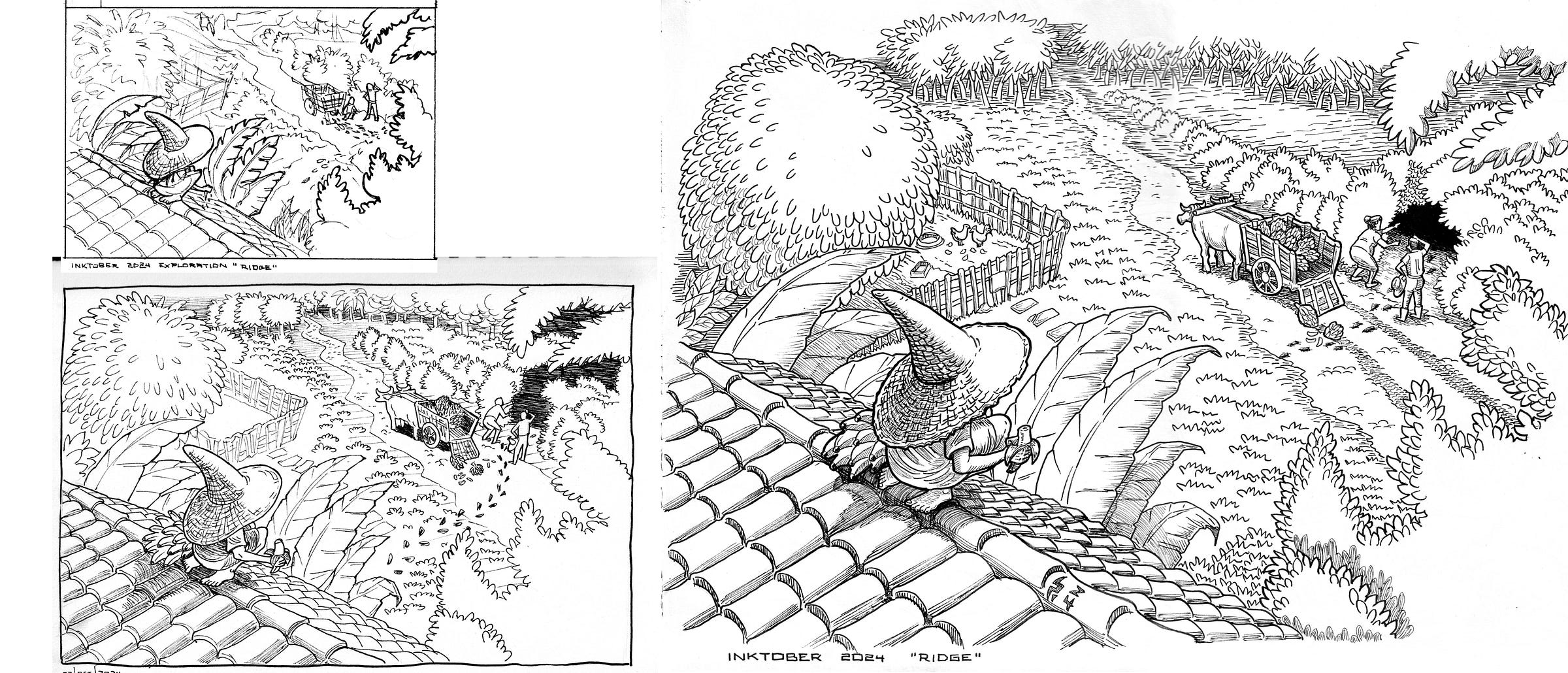What We Can Learn from a 30-Day Challenge
FOURTH INKTOBER'S WEEK
A 30-day event like Inktober presents multiple challenges for a visual artist who decides to participate. I’ve mentioned on social media that it doesn’t make sense to stress out over it, but the truth is that some stress is inevitable; otherwise, it wouldn’t be a challenge. What I really meant, though, was not letting the stress make us feel bad or negatively impact our family or those around us.
I completed all 31 drawings back in 2020, but I have to admit it caused me some bad stress. At times, I’d be in a bad mood until I finished the day’s piece, which often prevented me from spending quality time with my wife and daughter. Worse still, after the challenge ended, I felt a sort of drawing burnout and didn’t pick up a pencil for a few months.
A challenge beyond just 30 days
Since then, I haven’t felt the urge to complete all 31 drawings again, as I don’t have the time to devote solely to my art—family, house chores, and work occupy a significant part of my week. So, for me, the challenge now goes beyond simply completing a drawing each day. It’s a chance to push myself as an artist, using the opportunity to work on aspects like drawing, composition, inking, and my overall artistic approach.
In recent years, I’ve also applied an extra constraint to my Inktober participation to compensate for not completing all the entries. For 2021, for instance, I decided that all my entries would revolve around Halloween or October themes and decided to start applying colors with markers.

For 2022, I decided to practice character design. All of my entries were an original fantastic character for a hypothetical fighting video game. This was particularly challenging since I had to pick prompt words that would encapsulate the concept of an individual instead of a scene or something abstract.

For 2023, I chose to write a short story for each of the prompt words I selected, and each entry would be a scene from it. Also, I decided to use color again, but this time digital. What was remarkable about this experience was that there was actually a background context for anything that I drew, and sometimes, even my sketches added back a few details to its story.

This year’s challenge has been a great opportunity for me to intentionally apply my three-phase drawing method, add storytelling to my works, and improve my crosshatching—taking inking tips from Alphonso Dunn’s Pen & Ink Drawing book while coming back again to pure black-and-white work (with one exception). As a bonus, I recorded myself inking my sketches. Could I have made these strides at another time? Probably, but with so many other artists working from the same prompts, the opportunity to showcase my work is unique. Plus, it’s encouraging to realize that if I can produce pieces of this quality in a month, I could do the same for my own projects and initiatives in the following seasons.
RIDGE
For the prompt word "RIDGE," my initial idea was to have characters from my original story “Under the Old Bakery” stealthily walk along the ridge of a roof. However, since I’d just used some of those characters in the previous entry, I decided to go with a second idea—I tend to like variety from one day (or drawing) to the next.
Originally, I thought of a composition with multiple characters walking on a roof ridge, but this time, they would be mythological beings from El Salvador's countryside legends. To keep with the folklore theme, I chose three characters: El Cipitío, El Cadejo, and the Squeaking Cart. Eventually, I realized that including multiple myths might cancel each other in terms of storytelling, so I settled on featuring Cipitío and kept the Cart—but this time as a regular cart, not the ghostly version of the myth (I need to do a post about the most famous Salvadorean legends).
The exploration sketch (top left) contains the core storytelling elements and composition. In the working sketch (bottom left), I added more detail, making Cipitío’s mischief clear—he’s stolen some bananas. In the final piece, I refined each aspect and included the couple from whom Cipitío has stolen the bananas, portraying them as a traditional countryside pair.

Despite all the information clutter and useless flood of entertainment content out there, I believe we can still take what’s valuable to us and run to our hideout to do our version of artistic happiness. Why can’t we make our own 30-day challenge and share it with our audience?
If you’re curious about looking at the time-lapsed inking video for this entry, you can watch it below. Until next time!



I am definitely using your approach to inktober next year. I got burnt out around day 13 trying to draw something every day. Just selecting a few prompts and being more focussed about what I want to achieve sounds infinitely more doable and more useful too!